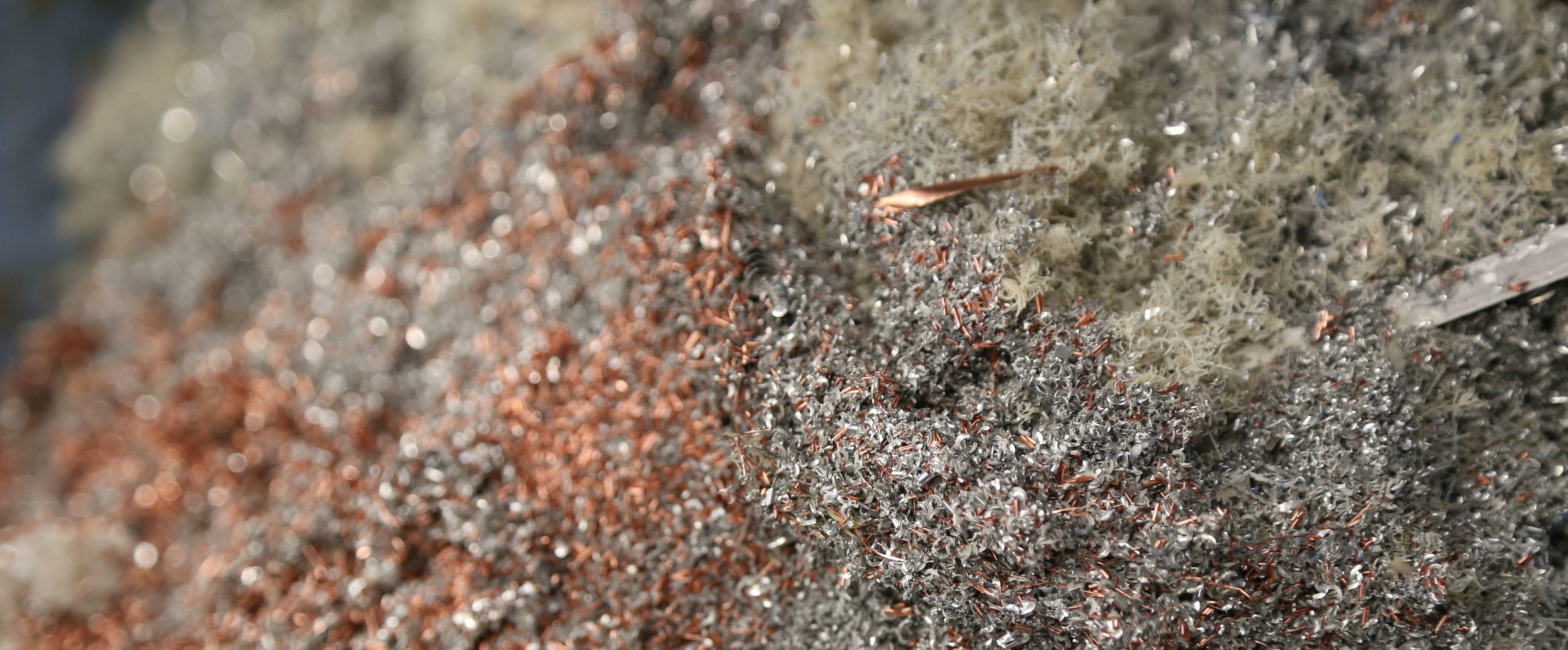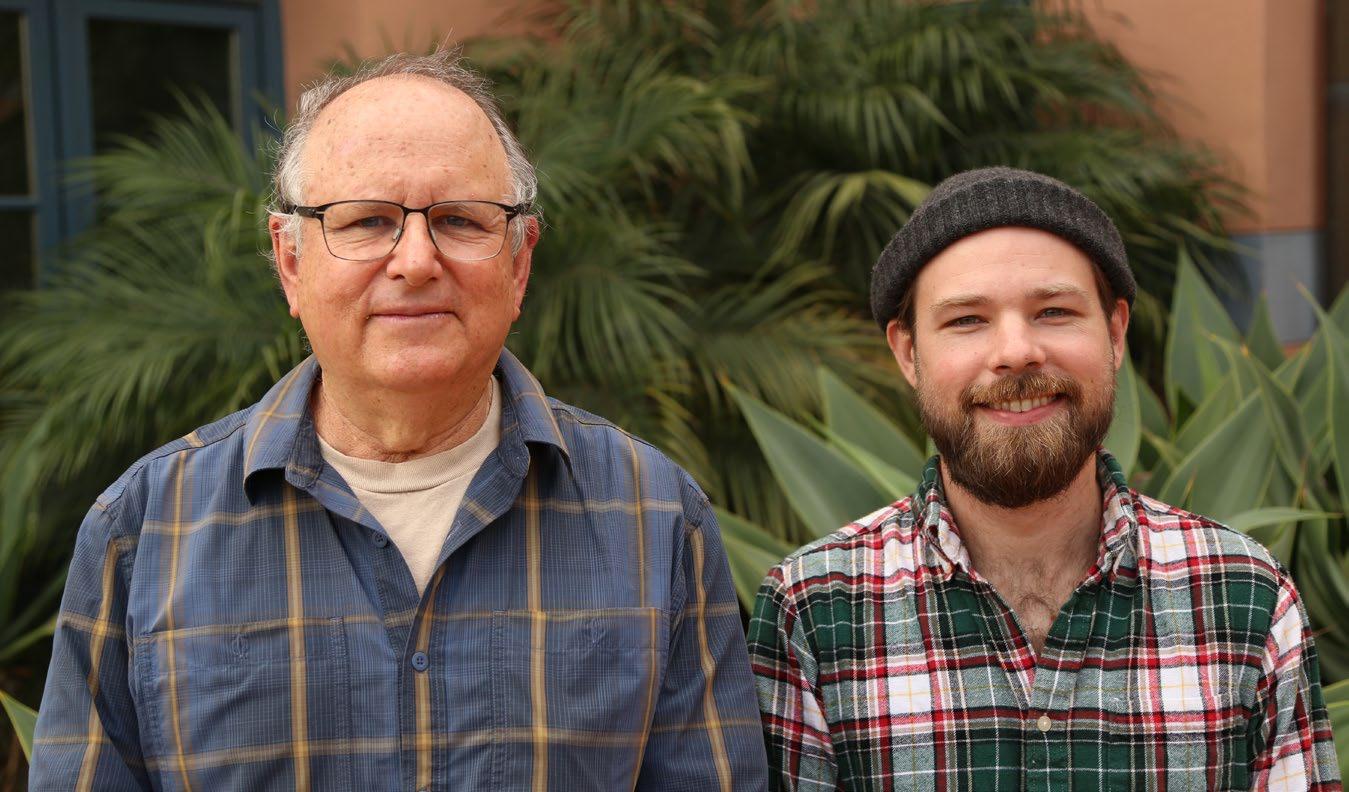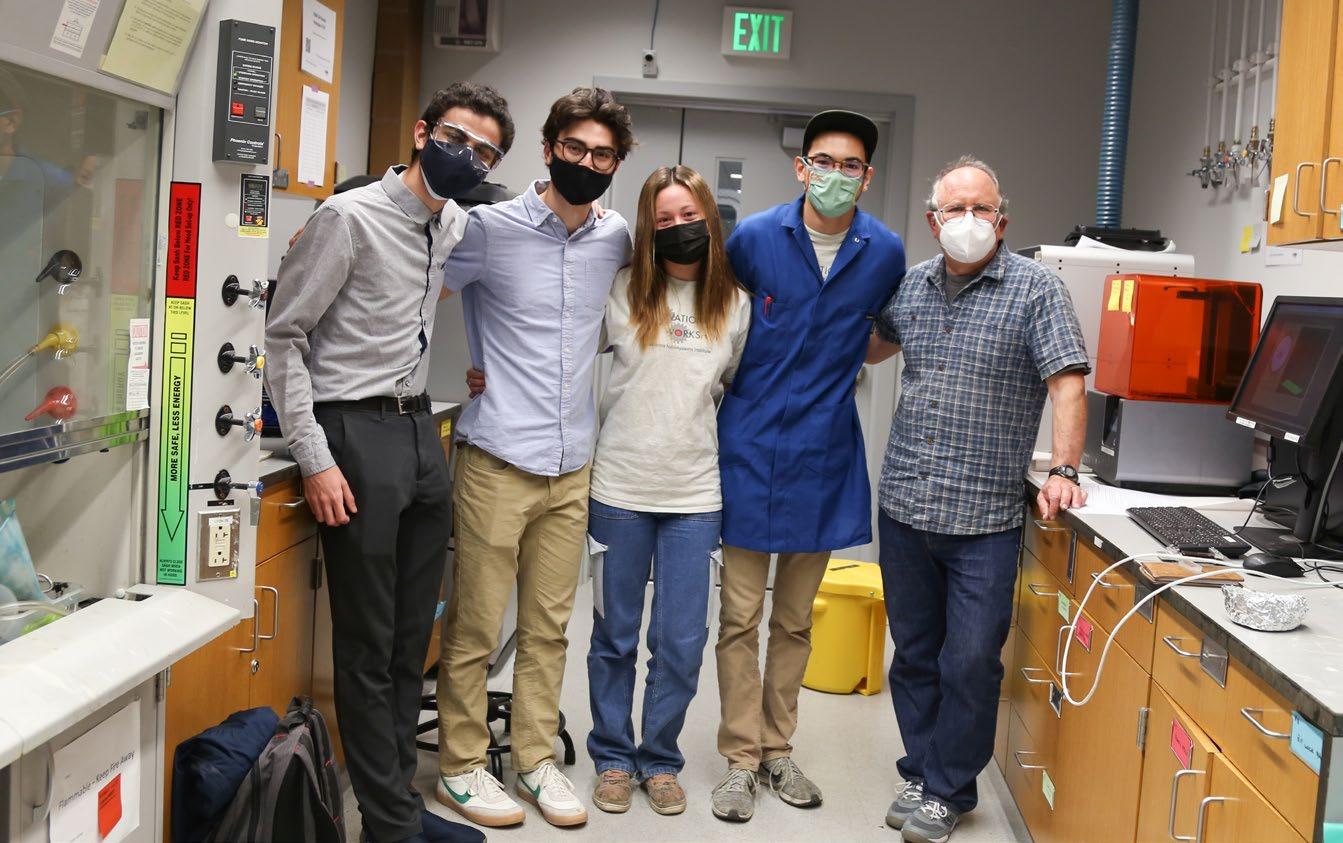
10 minute read
Tech Edge
The Microfl uidics Lab (MFL) at UC Santa Barbara is one of the few campus labs where relatively little research is conducted. It is, rather, an enabling lab, where researchers and lab staff fabricate tools required for their experiments. Established in its current location in Elings Hall ten years ago, the lab began life closely aligned with semiconductor research, according to longtime manager, Dave Bothman, who has spent 36 years at UCSB and who, though offi cially retired, continues to work part-time in the MFL, which gets its name from the word for the easily described process of microfl uidics, which Bothman says, is “simply making devices that have really small channels for fl uids to fl ow through.” The Microfl uidics Lab came to be in a rather roundabout way. UCSB has a long history of semiconductor manufacturing, and in the late 1990s and early 2000s, Bothman explains, that work expanded into making microelectromechanical systems (MEMS), which are mechanical devices made with the same tools developed to manufacture semiconductors. “Eventually, some of those MEMS researchers started moving into microfl uidics,” explains Bothman, who began his career as a professional “tinkerer” while working in a machine shop as a UC Santa Cruz undergraduate. He then transferred to Scripps Institute, where he spent seven years building experiments and equipment for ocean research. He was hired by the Department of Mechanical Engineering at UCSB in 1986. “I feel really grateful that I’ve been able to advance my career and continue to work with my hands,” he says.
Advertisement
Bothman’s successor as MFL manager, Brian Dincau, says that he looks forward to “playing a key role in the future development of the lab and training students to make experimental devices similar to what I’ve made for my own research. I’m excited to support other research groups that have an idea of what they want to measure or what sort of experiment they want to run but might not yet know how to build what they need.”
He also says that he and his predecessor have a lot of similarities: “We both like to tinker, we both like to talk about relatively technical things, and we both really value the duality of the lab — that it serves the university’s dual goals of furthering research by helping people to invent and create, while providing students with a world-class training and learning environment. I think education is one of the most important means of enacting change for the good, and I really want to be a part of that.” In the early days of microfl uidics, Bothman says, everyone who was making them was a cleanroom user, but a cleanroom is not an easy lab to get started in. There is a start-up fee, and it takes about six months to learn to use all the tools and work in it safely. No undergraduates are allowed in, and graduate students have to take a prerequisite class before entering. Most microfl uidics work, however, either does not require a cleanroom or requires it for only a small part of the process.
Eventually, with researchers from other departments fi nding uses for MF devices, an informal word-of-mouth supply process developed that made it possible for inter- ested researchers to obtain a device they needed from someone who had access to a cleanroom — but in nothing that could be considered a timely manner.
Recognizing the bottleneck, Bothman suggested to administrators in the California NanoSystems Institute (CNSI) at UCSB that they build an MF lab in Elings Hall. “They had already been thinking about that and were enthusiastic, and so we built this lab,” Bothman says. “The intention from the very beginning was that users from all over campus could come and make MF devices.”
That intention was sound, as the process of moving fl uids through very small channels, which can range in diameter from about seventy microns (the approximate width of a human hair), up to about one millimeter and even, occasionally, larger, is called for


Students undergo training on the various equipment and instruments in the Microfl uidics Lab. The Keyence VHX 5000 microscope is in the left foreground.

in widely varied research and an array of disciplines. In fact, before COVID, the lab had about two hundred users, and in midpandemic, in 2021, people from more than forty different research groups used it. It attracts everyone from physicists who might be studying the physics of droplet formation to chemists who might want to mix reagents in extremely small volumes,” Bothman says.
Mechanical engineering professor and CNSI co-director Megan Valentine, who is co-director of the California NanoSystems Institute, which supports and houses the Microfl uidics Laboratory, says that the MFL “has been a tremendous resource for a number of projects in my experimental research group; everyone in my group uses this facility, from undergrads just starting on their fi rst project to seasoned researchers who are independently driving multiple projects. Dave Bothman has provided important training and oversight, while encouraging researchers to explore new designs and test new ideas.”
Valentine says that researchers in her group have often used the lab’s 3D printing capabilities to generate low-cost, customized devices that can apply rapid forces to cells during imaging, as well as microfl uidic devices capable of rapid fl uidic mixing or generation of microscale droplets. “These devices are then used to understand and control the mechanical properties of cells in order to create improved diagnostics and therapeutics,” she says. “The tools and guidance provided by the MFL were essential for this work.”
Emilie Dressaire, an assistant professor in mechanical engineering whose research is aimed at developing bio-inspired strategies to control and sense fl uid fl ows at small scales — work that combines fl uid dynamics, soft matter, and biology — says that her group uses the lab to make MF devices, which are then used to make emulsions and droplets. “We’re hoping to use those emulsions to stabilize structures,” she says, adding, “We’ve been using all the lab’s PDMS tools [PDMS, or polydimethyl siloxane, being the most widely used silicon-based organic polymer]. We use the 3D printer to make molds, and we use the molds to create surfaces having a “hairlike” texture similar to that of cilia.”
Paul J. Atzberger, a professor in Mechanical Engineering and Mathematics, has made use of the MFL for multiple collaborative interdisciplinary projects. They have involved modeling particle and polymer transport phenomena within fl uidic devices, and related experiments; developing novel approaches for modeling and simulating transport phenomena associated with device electrostatics and electrokinetics; and investigating the roles of phenomena such as discrete ion-ion correlation effects in transport within microfl uidic devices.
One of the ways people most frequently use the lab is to make what are called droplet generation chips. And, Bothman explains, one of the most common ways to make the chips is to cast liquid silicon onto a silicon wafer that has some raised sections, creating a liquid silicon cast on top of a mold. Peeling the mold off leaves channels embossed onto the silicon. That piece of silicon can then be bonded to a glass slide that has inlets and outlets, or has holes punched in it to serve as inlets and outlets, and can then be put under a microscope so that the fl ow can be observed.
Not all chips made in the lab are used for generating droplets. Some are employed to breed bacteria, while others are intended to encapsulate bacteria inside a droplet of nutrient so that the bacteria can be observed as it evolves on the chip. Still other chips are applied in processes that use electro-chemistry to detect disease.
In addition to the many and varied researchers who fabricate devices in the lab, another group of people come to use a unique microscope — the Keyence VHX 5000 — which, Bothman says, “can do things that no other microscope on campus can.”
While many other microscopes
Longtime, recently retired Microfl uidics Laboratory manager, Dave Bothman (left) and his successor, Brian Dincau, who says he shares Bothman’s “fondness for tinkering.”


can magnify up to a thousand times, as the VHX 5000 can, that level of resolution typically yields a very shallow depth of fi eld. But this scope has a function that allows it to take multiple scans and combine them to provide perfect focus across a much greater depth of fi eld, ranging from ten times to a thousand times resolution. “It also takes really good photos and has excellent measuring capabilities,” Bothman says.
For her doctoral work, which built upon a decade-long chain of research at UCSB, Marcela Areyano (PhD ‘21) used the microscope to measure the diameter of the elastic threads that enable mussels to adhere to wet surfaces. Areyano’s measurements allowed her, in turn, to calculate the area of the threads and get meaningful measurements of their mechanical properties. “Any chance I got, I tried to use that microscope,” she says.
Areyano also made equipment in the lab for testing research setups to look at how mechanics and physical structures affect the performance of millimeter-scale synthetic adhesive structures modeled after adhesive mussel strings. For that, she laser-etched marker guides onto glass slides to ensure that her samples would be correctly placed and her readings, therefore, consistent; used the 3D printer to make molds to form the structures, and used the lab’s ovens to cure the resulting synthetic structures, which resembled mussel threads.
Many tasks, many tools, one busy place, and a microscope that is powerful but, more importantly, versatile: fi tting for the diversely empowering Microfl uidics Lab.
World of Wizards: Dave Bothman (right) and the four undergraduate Workshop Wizards, who keep the lab running (from left) Vedad Bassari, Jeran Bruce, Eliana Petreikis, Andrew Furst.
YOUNG WIZARDS In 2020, to address lab-access of the MFL challenges presented by COVID, Microfl uidics Lab (MFL) manager, Dave Bothman, began training a group of undergraduate engineering students he called the Workshop Wizards, to train lab users on equipment and do maintenance in the lab. “At that time, the height of the pandemic, a lot of people couldn’t come to the lab, so they would send designs of what they wanted to build, and the Wizards would build it and leave it outside for them to pick up,” Bothman says, adding, “The goal was to hire fi rst- and second-year students with the expectation that when they became seniors, they would be working in campus research labs but still be available to train younger Wizards. Learning to use all the tools here and in the Innovation Lab [down the hall] would position them well to get good research internships and jobs.” One of the lead Wizards is third-year undergraduate mechanical engineering major Andrew Furst, who says, “I love working on projects, working with my hands, trouble shooting, and coming up with solutions to problems. Working here, I get to interact with so many other researchers from so many different labs and fi elds of study, and they all involve engineering in some form and using the same resources for so many different purposes. “Going from concept and design to a physical product and seeing it fi t into their experiment, and then looking at their research paper and knowing that we had a small part in that is what I love most about it.” Furst’s wizarding duties get him involved with other labs around campus, and even across the country, making precision lab instruments, devices, and apparatuses that are not available off the shelf. One recent project involved fabricating a nasal stent for a rhinoceros on the East Coast, to address a buildup of scar tissue in the animal’s nasal cavity, which had resulted from an infected tooth and had required several surgeries a year to remove. All four of the Workshop Wizards were involved in the process, which Furst describes as “communicating back and forth, fi guring out which materials were bio-compatible, drafting different designs, coming up with different ways to produce the stent, and making it.” “The Wizards is a great program, and one that we would like to expand,” Bothman says. ”Over the years, many groups on campus outside of engineering have really benefi ted from having engineers help in their labs. They bring a different perspective and skillset than the students in psychology or biology, and it works out great for everybody to work together.”









